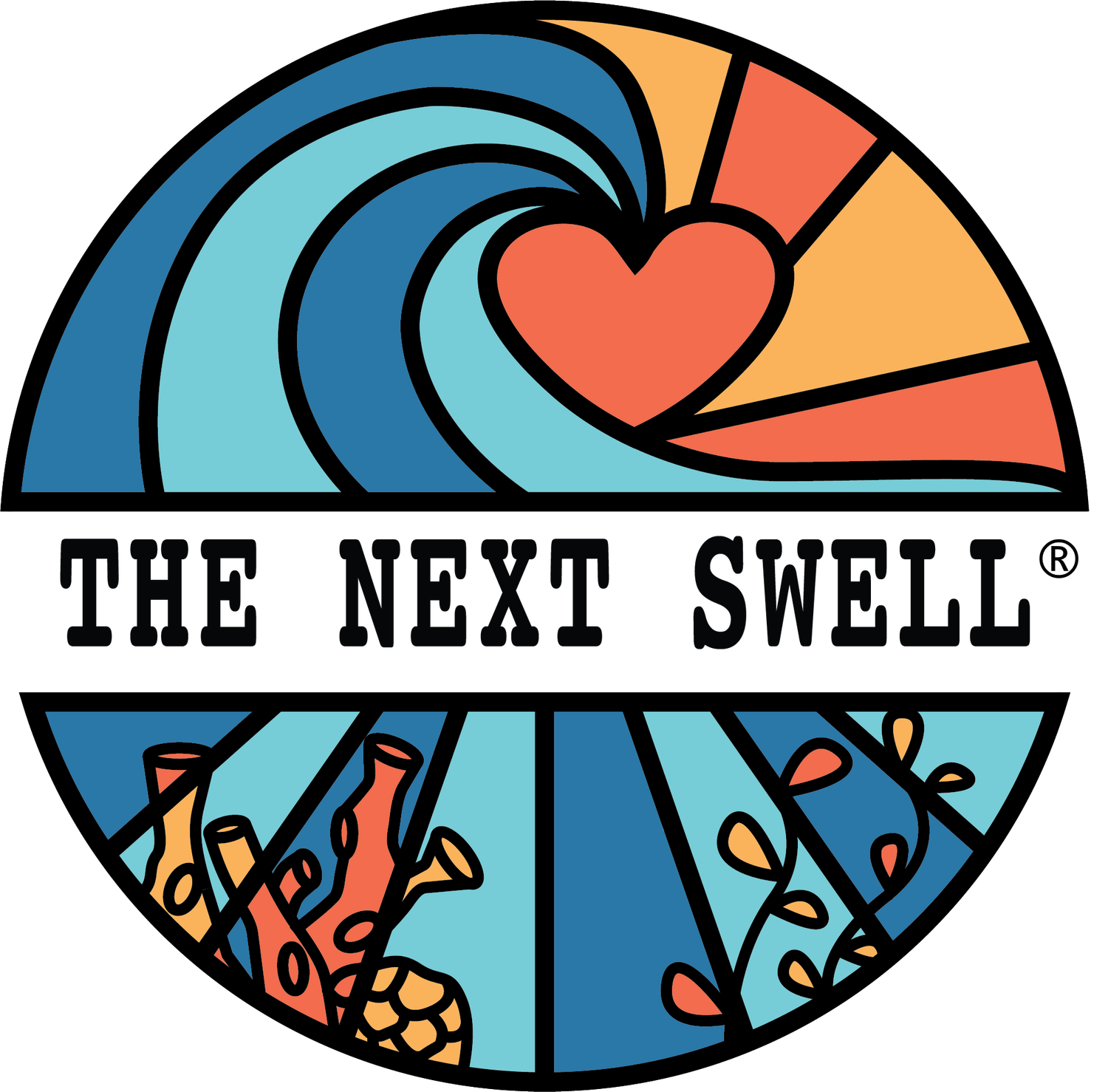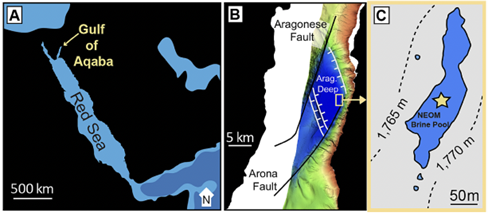The Calm After the Swell
Image credit: Gaëlle Duchâtellier
The Next Swell 2022 scholarship winner Gaëlle Duchâtellier shares an overview of her research in extreme marine and coastal environments.
Since receiving the Next Swell Scholarship, I have continued my research on extreme and coastal environments and have graduated from the University of Miami Rosenstiel School with a Masters of Professional Science (MPS) in Coastal Zone Management. While continuing research on the NEOM Brine Pool (Figure 1), my colleagues and I have been able to make great connections between the brine pool porewater geochemistry and regional tectonic, climate, and sedimentation events along the rapidly urbanizing coastline of the Red Sea. This past semester, this research was published by Science of the Total Environment. I’m really proud of this work and thankful for The Next Swell’s support as this is the first time I’ve published research as lead author, and I was recently awarded the Millero Prize for Best Student Publication by the Rosenstiel School for this paper.
Figure 1. Map of the location and tectonic setting of the NEOM Brine Pool Complex (Taken from Duchâtellier et al., 2024). A) Location of the Gulf of Aqaba. B) Aragonese Deep within the Gulf of Aqaba. C) Expanded view of the inset box in (B), which shows the morphology of the NEOM Brine Pool Complex.
While wrapping up the NEOM project, I’ve transitioned from studying extreme marine environments like hypersaline brine pools to much more common and well known coastal ecosystems to study their contributions to the global carbon cycle and coastal resilience. Our planet’s coastal ecosystems play a pivotal role in maintaining ecological balance and combating climate change. My master's thesis delves into these environments and their significance in “blue carbon” sequestration, which refers to the capture and storage of CO2 in marine environments (Figure 2). Mangrove forests, seagrass meadows, and intertidal marshes in particular have been recognized as blue carbon powerhouses by storing significant amounts of carbon within biomass and trapped sediments. In addition to this stored carbon, coastal ecosystems also provide nurseries and habitats for critical marine species and help protect our coastlines from storm surge.
Figure 2. Blue carbon ecosystems (Source: https://www.oceannets.eu/blue-carbon-management/)
For my project, I used GIS to map out and calculate the areal extent of coastal environments from a global dataset of extremely remote coral atolls (Figure 3), courtesy of the Khaled bin Sultan Living Oceans Foundation Global Reef Expedition. After conducting a review of published literature on blue carbon sequestration, I was able to estimate how much organic carbon these atolls possibly store. While blue carbon sequestration has traditionally been understood to bury carbon in biomass or trapped sediments, my research also considers how fish potentially contribute to carbon sequestration. I was also able to use GIS to calculate a habitat fragmentation index for these ecosystems and highlight potential areas of concern for ecological conservation. This project was one of the first analyses of blue carbon sequestration and blue carbon ecosystem extent in very remote areas, such as French Polynesia, the Cook Islands, and Tonga.
Figure 3. Location of the sites visited on the Khaled bin Sultan Living Oceans Foundation Global Reef Expedition, taken from Purkis et al. (2019). Out of the 89 atolls shown here, I analyzed 69 for blue carbon ecosystem areal extent and carbon stock. Red polygons emphasize the extent of mapping from the expedition and shapefiles projected on ArcGIS.
Research like this highlights the value of blue carbon budgeting and environmental conservation as a resilience strategy against the growing impacts of climate change, especially in Small Island Developing States (SIDS) that tend to have high concentrations of blue carbon ecosystems and rely heavily on the services they provide. Many of the atolls studied are part of SIDS that have not previously been considered in blue carbon accounting schemes, emphasizing the importance of future blue carbon research. During this project, I also conducted a pilot study in Biscayne Bay, Florida to estimate carbon stocks in the sediments over time. Though I completed the MPS program this past semester, I will continue working on this blue carbon project with the Biogeochemistry Lab Group at the Rosenstiel School and will be presenting the initial results of this project at the 2024 Ocean Sciences Meeting in February!




